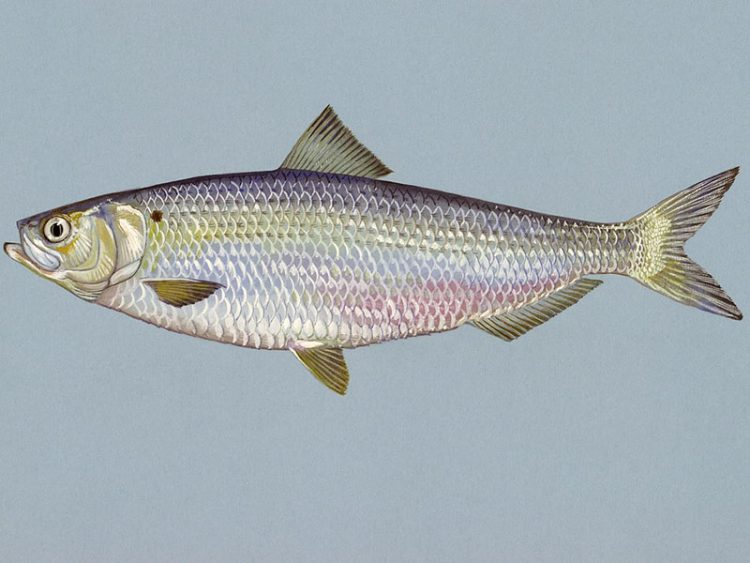Poison in fish: chemists at the University of Graz discover new arsenic compounds in herring caviar

In Seefisch, wie zum Beispiel dem Hering, können sich giftige Spurenelemente anreichern. Foto: pixabay
When looking for arsenic compounds in the membranes of marine organisms, the scientists in Graz focussed on fish eggs because they have a particularly high concentration of membranes. In samples of herring roe from the Norwegian Sea, the researchers discovered two previously unknown groups of lipid-soluble arsenic compounds, which make up around 80 percent of the total content of this trace element.
“For the first time, we were able to prove that arsenic can be found in phosphatidylcholines,” reports Sandra Viczek, MSc, first author of the current publication.
“The discovery is important because phosphatidylcholines are core components of membranes and therefore play a biologically important role in the cell metabolism,” highlights Kevin Francesconi. “Furthermore, these types of arsenolipids probably make up over half of all the lipid-soluble arsenic in marine creatures,” adds Kenneth Jensen, the main author of the study.
Five new phosphatidylcholines containing arsenic were identified during the current study. However, Jensen believes that “there are probably many more of these complex natural substances.”
The next step is to clarify how poisonous the compounds discovered are. Francesconi and his team are investigating this topic in the framework of a research project financed by the Austrian Science Fund (FWF).
“In cooperation with toxicologists at the University of Potsdam, we are investigating what the high proportion of these substances in the membrane means from a toxicological point of view, i.e. what effect the phosphatidylcholines containing arsenic have on the cell metabolism.” A related question is how and why these compounds are biosynthesised in the fish in the first place.
The pioneering research results were made possible by the recently acquired high resolution mass spectrometer at the “NAWI Graz Central Lab – Environmental, Plant & Microbial Metabolomics“. This instrument allows the components to be fragmented into their constituent parts and identified with utmost precision.
Publication:
Arsenic-containing Phosphatidylcholines: a New Group of Arsenolipids Discovered in Herring Caviar
Sandra A. Viczek, Kenneth B. Jensen, and Kevin A. Francesconi
Angewandte Chemie International Edition, doi: 10.1002/anie.201512031
Contact:
Univ.-Prof. Dr. Kevin Francesconi
Institute of Chemistry at the University of Graz
Tel.: 0043 (0)316/380-5301
Email: kevin.francesconi@uni-graz.at
http://onlinelibrary.wiley.com/doi/10.1002/anie.201512031/abstract Publication in Angewandte Chemie
Media Contact
More Information:
http://www.uni-graz.atAll latest news from the category: Life Sciences and Chemistry
Articles and reports from the Life Sciences and chemistry area deal with applied and basic research into modern biology, chemistry and human medicine.
Valuable information can be found on a range of life sciences fields including bacteriology, biochemistry, bionics, bioinformatics, biophysics, biotechnology, genetics, geobotany, human biology, marine biology, microbiology, molecular biology, cellular biology, zoology, bioinorganic chemistry, microchemistry and environmental chemistry.
Newest articles

Recovering phosphorus from sewage sludge ash
Chemical and heat treatment of sewage sludge can recover phosphorus in a process that could help address the problem of diminishing supplies of phosphorus ores. Valuable supplies of phosphorus could…

Efficient, sustainable and cost-effective hybrid energy storage system for modern power grids
EU project HyFlow: Over three years of research, the consortium of the EU project HyFlow has successfully developed a highly efficient, sustainable, and cost-effective hybrid energy storage system (HESS) that…

After 25 years, researchers uncover genetic cause of rare neurological disease
Some families call it a trial of faith. Others just call it a curse. The progressive neurological disease known as spinocerebellar ataxia 4 (SCA4) is a rare condition, but its…





















